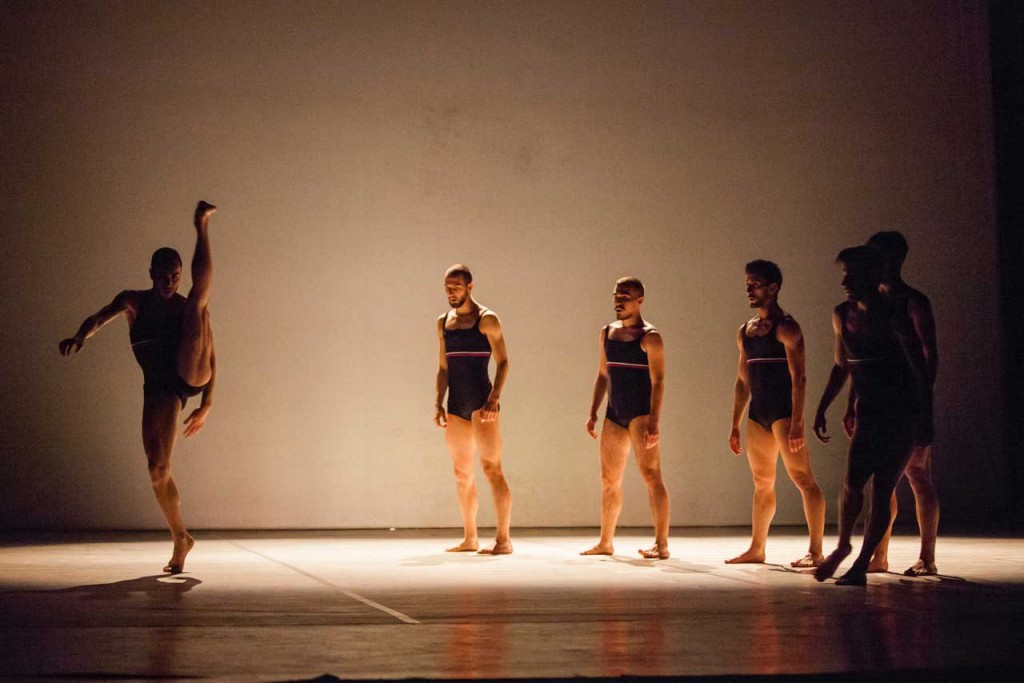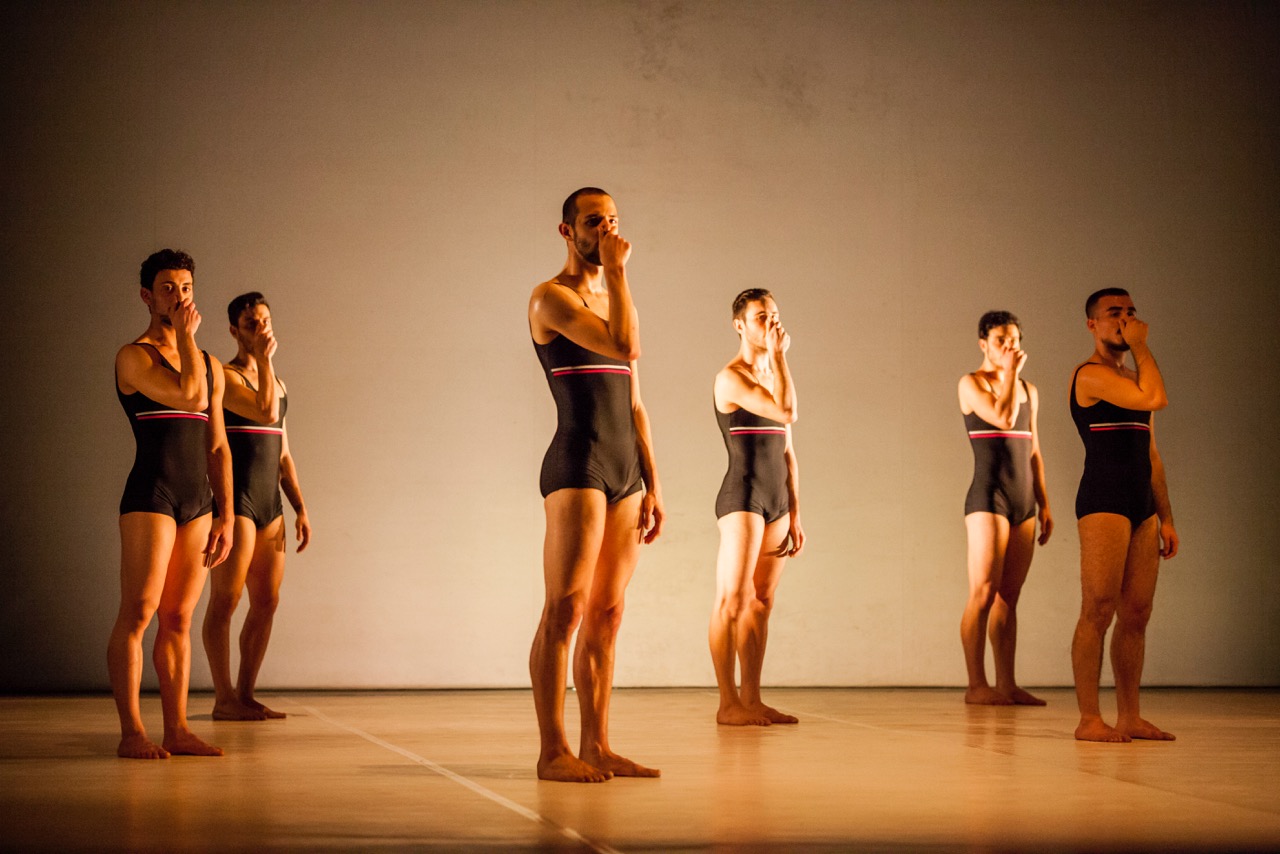Het is een nieuwe en belangrijke trend binnen de programmering van internationale dans- en performance festivals in Nederland: niet alleen relevant werk van internationale choreografen tonen, maar ook uitdrukkelijk aandacht besteden aan dansmakers verbonden met de Nederlandse danspraktijk. Spring Utrecht opende in mei met Nicole Beutler en sloot af met Jan Martens, terwijl tijdens Julidans Pere Faura de spits mocht afbijten met sin baile no hay paraíso (no dance, no paradise).
Julidans toonde niet alleen Eszter Salamon, Meg Stuart, Mette Ingvartsen en Lemi Bonifasio, maar had ook de wereldpremière van Protagonist, het nieuwe stuk van Jefta van Dinther bij het Zweedse Cullberg Balleten. Tijdens het slotweekend was er speciale aandacht voor Israëlische choreografen actief in Nederland. Behalve het drieluik Barbarians van Hofesh Shechter, van wie het NDT ouder werk op het repertoire heeft, presenteerde Julidans een dubbelprogramma met werk van Itamar Serussi en Keren Levi.
Dat dubbelprogramma rammelde aan alle kanten. Het relatief korte werk van Serussi – sinds twee jaar huischoreograaf bij Scapino, daarvoor actief bij het Tilburge Station Zuid – lijkt inderhaast in elkaar gezet. Tefer maakt weinig indruk door een gebrek aan compositorische logica. Daar tegenover staat het avondvullende en doorwrochte werk van Keren Levi. The Dry Piece XL is een heropname van een stuk uit 2012, gemaakt samen met videokunstenaar Assi Weitz en componist Tom Parkinson.
Erkenning
Aan de choreografie van The Dry Piece is niets veranderd. Alleen het aantal dansers is verdubbeld, van 4 naar 8. Dit heeft niet alleen interessante consequenties voor de impact van het werk, maar ook voor de verspreiding ervan: van de kleine zaal naar de grote, van het gespecialiseerde theater naar de schouwburg, van een artistieke incrowd naar het grote publiek, waar nieuwe uitdagingen liggen maar ook meer erkenning te behalen valt.

De onevenwichtigheid van het dubbelprogramma wordt dan nog eens versterkt doordat Levi’s werk geheel ongeschikt is voor de oude zaal van de Amsterdamse Stadsschouwburg. Het heeft de openheid en intimiteit nodig, goede zichtlijnen en lekker veel ruimte rondom, die een groot vlakke vloer theater biedt, zoals voorhanden in de Rabozaal één trappenhuis verder in hetzelfde gebouw of bijvoorbeeld in de schouwburgen in Rotterdam en Utrecht. The Dry Piece combineert heel behendig elementen uit dans, film en video en beweegt als stuk op de grens van theater en beeldende kunst. Wanneer je dit werk, zeker in een XL uitvoering, terug plaatst in een lijsttoneel met een 19de eeuwse setting, doen je het werk stomweg geen recht.
Eendimensionaal
Serussi’s stortvloed aan losse ideetjes en muziekjes, functioneert dan weer wel in de lijst vanwege zijn eendimensionale esthetiek. In het begin intrigeert Tefer zelfs een moment door het gebruik van silhouetten, die het visuele aspect van het werk áls esthetiek benadrukken en tegelijkertijd verwarring zaaien over de belichaming die in de silhouetten wordt gesuggereerd. Zit ik naar mannen of vrouwen te kijken, zijn het witte, zwarte of zwart geverfde dansers? Jammer genoeg zet Tefer niet door met het uitwerken van dit of enig ander idee.

Het dubbelprogramma pakt zo voor beide choreografen ongunstig uit, maar roept ook de vraag op waarom het publiek met deze onnavolgbare combi wordt opgezadeld.
Promotie
Na afloop wordt duidelijk dat het dubbelprogramma onderdeel uitmaakt van een promotie-project voor opkomende Nederlandse choreografen, Moving Meetings. De double bill “is voor iedereen toegankelijk (dus niet alleen voor professionals)”, zo vermeldt Julidans op de webpagina voor het programma. Maar er is meer. Tefer werd gefinancierd door het Fast Forward-programma van het Fonds Podiumkunsten, waarbij 12 tot 15 podiumkunstenaars een (meerjarig) samenwerkingstraject in het buitenland krijgen gefinancierd, om een voorstelling of concert te maken. Met het programma, dat loopt tussen 2014 en 2016, is 1,1 miljoen euro gemoeid.

Het is natuurlijk heel belangrijk dat Julidans zijn positie als festival in binnen- en buitenland versterkt door niet alleen aan import te doen, maar ook de export van hedendaagse dans te bevorderen, en dat alles in nauwe samenspraak met verschillende overheden. Tegelijkertijd is het de vraag of de mercantiele overwegingen, al decennia zo vreselijk typerend voor het Nederlandse dansbeleid, ten koste mogen gaan van het in alle ernst presenteren van werk. Waarom zeggen choreografen ja tegen zo’n voorstel? En wat levert hen dat op?
Hergebruik
Ook opvallend is dat met choreografen als Serussi of Hofesh Shechter het oude uitgangspunt van Julidans, “alles wat geen ballet is” te programmeren, overboord is gezet. Als Serussi’s Tefer één ding duidelijk maakt, dan is het dat het werk niet om een uitdagende choreografische, conceptuele of anderszins methodische aanpak gaat – iets wat tot artistieke visie leidt, maar dat het veeleer te doen is om hergebruik van gestes en thematieken, zonder het esthetische kader van neo- of post-ballet zelf uit te diepen of te bevragen.
Je zou willen dat Itamar Serussi zou worden uitgedaagd iets structurelers te doen, een noodzaak te vinden in de compositie en de inzet van lichamen en beweging. Je zou willen dat The Dry Piece XL serieus werd genomen, en door Julidans als een volwassen werk aan het publiek was gepresenteerd. Ik schreef twee jaar geleden over The Dry Piece, dat toen heel mooi in Theater Kikker stond. Na het weekend zal ik de extra grote versie bepreken. Los van alle toestanden er om heen.
Gezien: Julidans, van 30 juni tot 10 juli 2016 in Amsterdam

